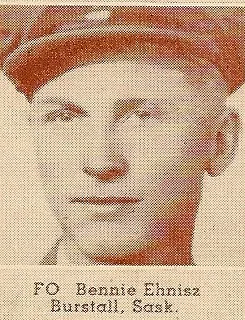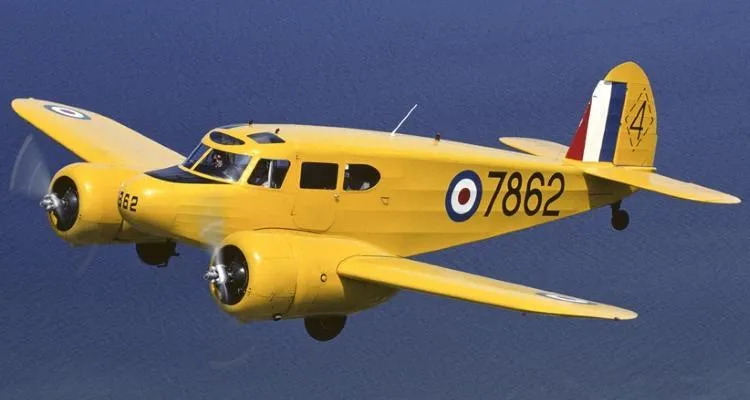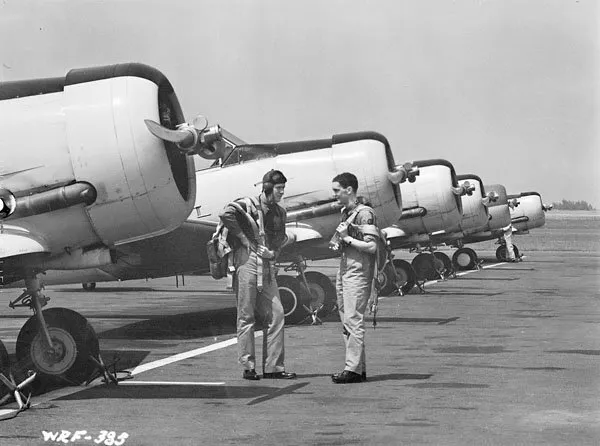Ehnisz, Bennie Emil (Flying Officer)
Killed in Flying Accident 1943-February-13


Birth Date: 1920-April-25
Born: Burstall, Saskatchewan
Parents: Son of Jacob and Anna Ehnisz, of Burstall, Saskatchewan.
Spouse:
Home: Burstall, Saskatchewan
Enlistment: Regina, Saskatchewan
Enlistment Date: 1940-October-11
Service
RCAF
Unit
2 FIS- Flying Instructor School
Base
Vulcan, Alberta, Canada
Rank
Flying Officer
Position
Pilot
Service Numbers
J/6806
Crane serial: FJ282

Canadian Warplane Heritage Museum
The Cessna T-50 Crane was the RCAF version of the Cessna AT-17 Bobcat, a twin-engined advanced trainer designed and made in the USA during the Second World War. It served to bridge the gap between single-engined trainers and twin-engined combat aircraft.
First flown in 1939, the American-built Cessna Crane was developed as a five-seat, light transport civilian aircraft. It was originally intended to serve only a minor role within the BCATP (an initial 180 were ordered in 1940) until the Canadian-built Avro Ansons became available in greater numbers. This was the first large order that Cessna had received for one of its products. Eventually, more than 5,400 Cranes would be produced, of which 826 saw service with the RCAF. Cessna Cranes were used primarily to teach future bomber pilots, after they had received their initial training, to fly multi-engined aircraft at Service Flying Training Schools in western Canada.
Powered by 245-horsepower Jacobs R-755-9 radial engines, Cessna Cranes featured wooden wings and tail married to a fuselage constructed of welded steel tubing. Most of the aircraft was fabric-covered. It was cheap, reliable and relatively easy to fly, with a top speed of 315 kilometres (195 miles) per hour.
The Crane provided twin-engined complexity with economy of operation and went on to become one of the most important aircraft used by the BCATP. Cranes continued to serve with the RCAF until 1947, after which many were purchased by private individuals and companies.
Nicknamed the Bamboo Bomber because of its largely wood construction, the Crane had a reputation as a stable and reliable aircraft. Although not an ideal training aircraft because of its poor single-engined performance and load-carrying capability, it performed its duties satisfactorily and helped train several thousand bomber pilots. Bomber Command Museum of Canada
Aircraft Images
Crane FJ282
Crane Mk. IA FJ282
Also received USAAF serial 42-13799 as an AT-17A. Reported with the Test and Development Establishment at RCAF Station Rockcliffe, Ontario, dates unknown. Category A crash on 13 February 1943, while with No. 2 Flying Instructors School at Vulcan, Alberta. Scrapped by No. 10 Repair Depot.1942-07-30 Taken on Strength No. 4 Training Command 2019-08-20
1943-February-13 Accident: 2 Flying Instructor School Loc: Champion Alberta Names: Ehnisz | White
1943-03-22 Struck off Strength Struck off, reduced to spares and produce 2019-08-20
Unit Desciption
2 FIS (2 Flying Instructors School)
Formed as a sub-unit of No 15 Service Flying Training School at Claresholm, Alberta on 27 April 1942
Became inactive on 29 December 1944 disbanded on 20 January 1945
Project 44 BCATP